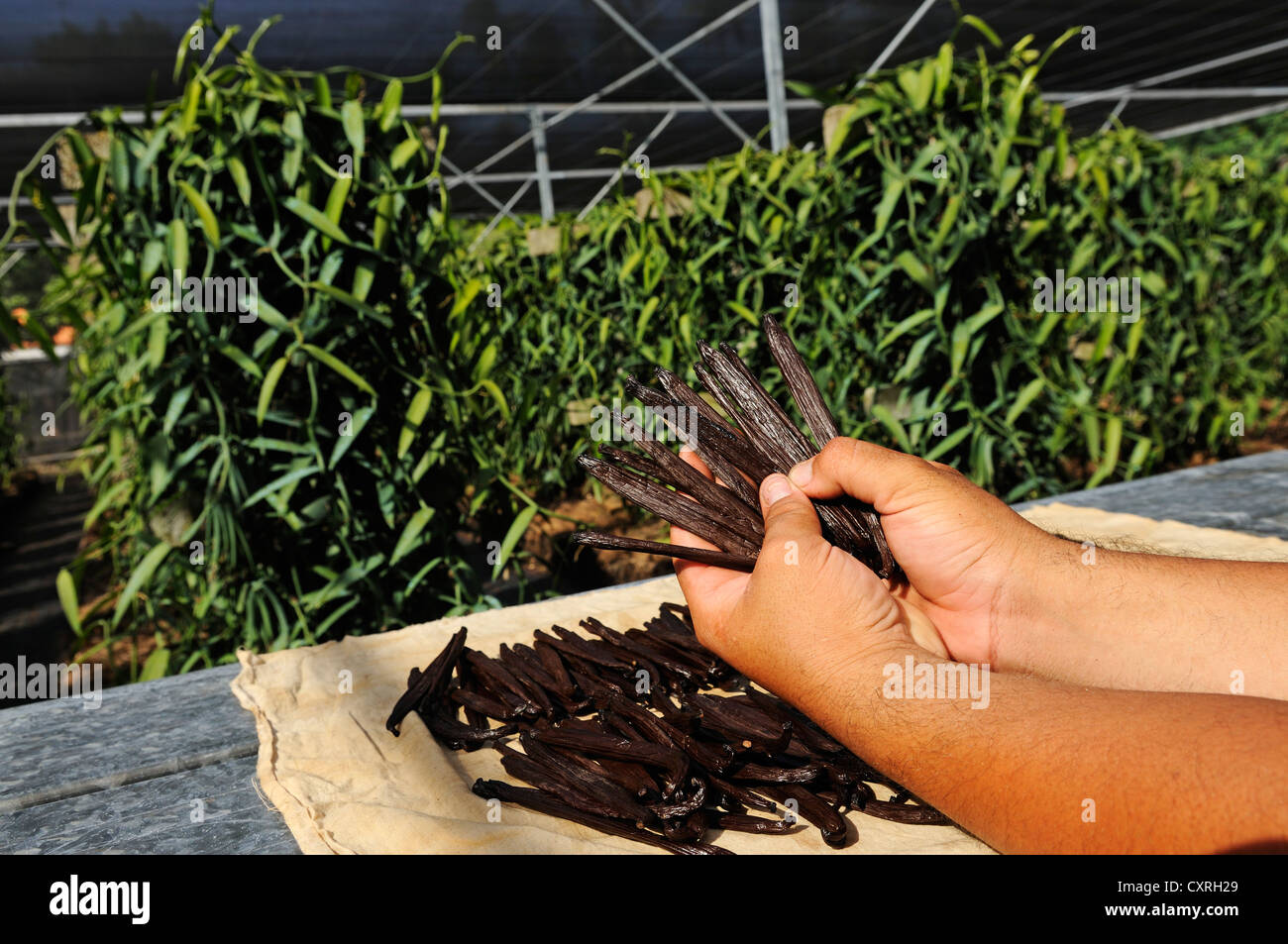

It has a thinner stem and oval-shaped leaves, and is dark green in color. Description: Tahitian vanilla is unique among these hand-grown varieties, as it is a hybrid of two species, Vanilla planifolia and Vanilla odorata. īelow we offer you this rare Tahitian Vanilla. The industry in Puerto Rico grew until the 1950s, when it declined after World War II as industrialization superseded agriculture. The USDA station in Puerto Rico conducted horticultural, breeding, and bean-curing research in support of the vanilla industry.

planifolia was introduced from Florida into Puerto Rico twice before 1909. Vanilla has been cultivated domestically in Puerto Rico, Hawaii, and Florida since the early 1900s. It appears this may actually have merit in pursuing. Some people have been exploring the commercial production of Vanilla here in Florida. Of course, it's market price doesn't compare to the outlandish cost of saffron but vanilla can earn a grower a very nice profit compared to other agricultural goods. While it originated in Mexico vanilla is famously cultivated in Madagascar and other islands in the Indian Ocean. The world's second most expensive spice is vanilla.

Vanilla is the second most valuable spice on earth. Of the nearly 35,000 species of orchid, the second largest botanical family of plants, vanilla is the only species that produces an edible fruit. The vanilla orchid (Vanilla planifolia) is one of the world’s most interesting plants. Our native Florida vanilla species are endangered and should not be collected from natural areas without proper authorization and permitting by regulatory authorities. Vanilla planifolia has become naturalized throughout Southern Florida. barbellata, dilloniana, phaeantha and mexicana ). Jennifer Reed is the Editorial Director of Naples Botanical Garden and a longtime Southwest Florida journalist.In Florida we have four native vanilla species ( V. According to him, the United States is the world’s largest importer of vanilla beans, but domestic production is scant.Īlthough the Garden is not directly contributing to his research, Nick and the professor are in contact and considering some collaborations down the road. There is, in fact, a push to make vanilla a commercial crop in Florida, led by University of Florida Assistant Professor Alan H. (Worldwide, there are about 108 species of vanilla orchids.) Eventually, the Horticulture Team hopes to supply Fogg Café with Garden-grown vanilla. They have slightly different flavor profiles. planifolia, and Nick will plant another variety, V. Now you know why a tiny bottle of extract fetches a big price! Vanilla is the world’s second-most expensive flavoring, behind saffron. The pods are harvested, exposed to heat to kill the plant cells placed in plastic bags and “sweated” at elevated temperatures for 24 to 48 hours exposed to sunlight a few hours a day for 12 to 15 days dried on trays for another 70 days and conditioned over one to two months. If the orchid is successfully pollinated, it’ll produce string bean-looking seed pods that grow for eight to nine months. “You’ll have one flower that opens up for a night, and then it closes down the next day, and that flower is done, and then the next day or a couple days later, there might be another flower that opens, and so there’s kind of a blooming period where you’re checking each day for flowers.” “They produce spikes that bloom sequentially,” explains Director of Collections Nick Ewy. (You can learn all about vanilla’s origins and migration here.). Vanilla planifolia, the most commonly cultivated variety, originates in Central America, and its pollinators weren’t exported along with the vines. It begins with hand pollinating the flowers each morning while they are blooming. Going from bloom to bean is a long and cumbersome process, which we’ll be able to show you more directly as the vines mature. Those flowers are where vanilla flavoring gets its start. They’re individual strands now, but they’ll fill in like a hedge, a thicket of green that will produce greenish yellow flowers each spring. In the Kapnick Caribbean Garden, behind the Pastore Caribbean House, you’ll find a set of trellises with slender Vanilla planifolia vines twisting through them.

Our Horticulture and Operations teams have teamed up to bring these flowers, which produce the seed pods that make vanilla extract, down to eye level. Their vines snake up trees, blending into foliage, and their blooms often appear up high and out of sight. Vanilla orchids are a favorite talking point in the Garden, but not always the easiest show-and-tell.


 0 kommentar(er)
0 kommentar(er)
